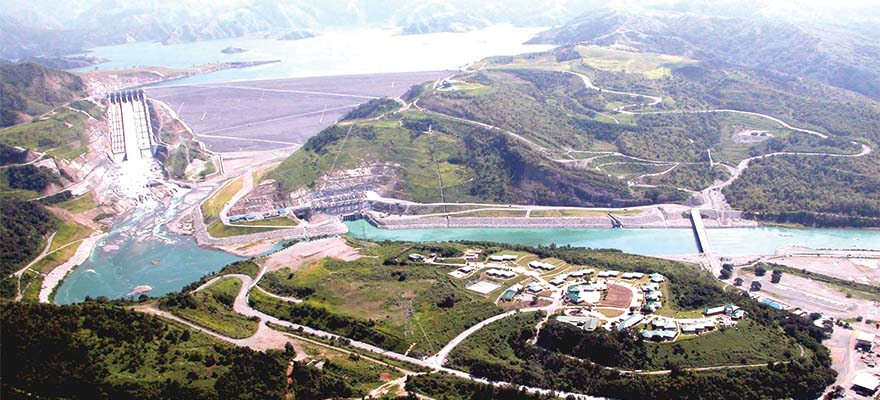Home > Highlighting JAPAN >Highlighting Japan November 2013>40th Year of ASEAN-Japan Friendship and Cooperation
Highlighting JAPAN
40th Year of ASEAN-Japan Friendship and Cooperation
Creating energy together:
New joint energy development programs

The markets of ASEAN countries have experienced rapid growth in the past 20-30 years and have achieved dramatic growth as an independent economic zone. However, many countries not only do not have the capital to pay for modernization projects but also do not possess the cultural and technical know-how to continue on with these projects once started. For this reason, ASEAN countries have high expectations of assistance from Japan. In this article, we will introduce Marubeni Corp., a company that even among many Japanese industrial enterprises, has been developing electricity projects alongside many ASEAN countries from an early stage in the electricity industry, over a period of many years, in support of regional economies.
One example of this is the union of Myanmar. As of this year, Marubeni Corp. has been operating in Myanmar for 71 years. Due to a long history in the country, the company has worked with many people and is very familiar with the social and political situation. Marubeni Corp. was recently awarded a gas turbine overhaul for the Ywama Combined Cycle Power Plant, built by the company in 2005.
Myanmar lacks infrastructure with regards to power production, therefore Marubeni Corp. thinks that there is a necessity to increase domestic electrical supply projects in the country. Furthermore, because there is limited capital for ventures such as the Ywama plant, the company provided project management and EPC (engineering, procurement and construction) for this scheme in partnership with a Japanese government organization, New Energy & Industrial Technology Development Organization (NEDO).
A representative from Marubeni Corp. power systems talked with us about issues concerning the Ywama combined cycle power plant overhaul project.
Gas is not only found in onshore oil and gas fields but also in the seabed. Originally, onshore gas was used as the fuel supply for the plant but as this started to run out, the gas supply was diverted to offshore gas extracted from the seabed. The chemical structure of onshore and offshore gas is different such that the combustion ratio and efficiency differ (this is similar to using different grades of gasoline in an engine). It was not possible to analyze the different chemical structure of onshore and offshore gas and adjust the gas turbine of the power plant. This resulted in a 20% decrease of electric output from the plant and degradation of the gas operated turbines.
Marubeni Corp., in cooperation with Hitachi (one of Japan's major electronics manufacturer), stepped in to handle the repairs. In order to facilitate the completion of the project within the deadline, and make electrical power production in the country's dry season possible (hydroelectric power cannot meet the demand in this season), both companies provided their technologies for various activities in many different instances.
A representative told us that the people of Myanmar are very grateful for the help they received from Japan.
Another example of successful cooperation with the locals is the San Roque Multi Dam BOT Project in the Philippines. Toshiba turbines are used in the plant (Toshiba is a world leader in turbines) and Marubeni Corp.'s partner here is Kansai Electric Power Co. (Kansai Denryoku). Both companies cooperate together on this project, and a Japanese company manages maintenance and operation of the plant. Japanese engineers are present on-site and are responsible for training the other Filipino engineers and maintaining the day-to-day plant operation. San Roque Multi Dam BOT Project has been constructed on the basis of three main items; 1. power generation, 2. flood prevention, 3. water for irrigation. The motivation behind construction of this plant is not power generation alone but prevention of flooding and stable provision of water to local farmers.
Projects such as the Ywama Combined Cycle Power Plant and San Roque Multi Dam BOT Project are doing much to meet power demands in Myanmar and the Philippines. A stable power supply will contribute to the economic development of both countries, and in the short term, is helping to improve standards of living. A bright energy future lies ahead for ASEAN.
© 2009 Cabinet Office, Government of Japan






